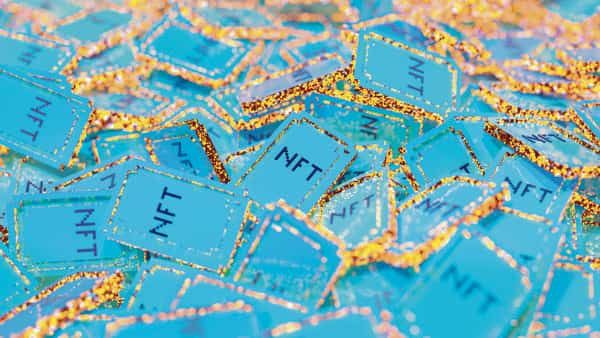Before Twitter’s takeover, Jack Dorsey, its founder and ex-CEO, sold his first tweet (also the first tweet ever) as an NFT for more than $2.9 million.
Non-fungible tokens (NFT’s) have been all the rage. As with most things tech-oriented, many people bandy about new terms like ‘NFT’ without understanding how the technology works or what it is designed to do. The courage to say “I don’t know” is the preserve of very few. We have been bombarded recently with news of Elon Musk’s purchase of Twitter and the ensuing bloodbath there; over half its employees were fired or have resigned. Its verification system is now ‘for sale’ and therefore means much less than it used to. Some users have reported problems with security features.
But this column is about NFTs. Before Twitter’s takeover, Jack Dorsey, its founder and ex-CEO, sold his first tweet (also the first tweet ever) as an NFT for more than $2.9 million. Meanwhile, creators of the Bored Ape Yacht Club (BAYC) created an NFT collection of cartoon images of apes depicted in various states of ennui. A popular digital artist, Mike Winkelmann (known online as Beeple) sold a single NFT for almost $70 million.
You might also like
Will CNG upstage diesel as fuel of choice?
Aryan Khan & a devil-may-care bet on premium liquor
Why Godrej Properties may take time to recover
What the sharpest growth in risky AIFs means
So, what exactly are NFTs? While most media reports on them are about the sale of artworks, NFTs can be anything digital. Jack Dorsey’s tweet, for instance, is not art. ‘Non-fungible’ simply means that the item cannot be replaced by anything else; it is unique. In contrast, money is fungible; a ₹500 note can be exchanged for another ₹500 note. And one Bitcoin is the same as another. Also, money and cryptocurrency are not inexhaustible.
A painting or song or another piece of work is not fungible. You cannot exchange any of the Raja Ravi Varma paintings that hang in Vadodara with those in Mysuru. Cassidy and Sugaree by The Grateful Dead are not interchangeable songs. They are non-fungible. Also, their provenance is known. We know that Ravi Varma was commissioned by Sir T. Madhavrao, Regent of Baroda, for many assignments there, all of which are recorded, thereby establishing the origin of these works.
However, the advent of the digital age means that any number of copies of music or songs can be made in MP3 or other formats, and any number of high-quality digital art or photographs can be copied with no loss of fidelity from the original. Therefore, they are inexhaustible, since, unlike money, you can make any number of exact facsimiles by yourself. Court cases and government actions over Napster’s software that allowed peer-to-peer sharing of song files forced that company to shut down in 2001, after a clumsy system of ‘digital rights management’ under the US’s Digital Millennium Copyright Act was enforced. Current law is still clumsy when it comes to copying and sharing digital content.
Enter the NFT. By using blockchain technology, something most readers must be familiar with by now, NFTs create a digital non-fungible ‘token’ for each original piece of digital art or creative work (such as a Bored Ape cartoon), which is now forever the only original there is. All the others are only copies of that original. For now, most of these NFTs are on the Ethereum blockchain.
NFTs capitalize on an insight into human nature: the need to ‘own’ things. Jack Dorsey’s tweet has been freely available on the internet, even to those without a Twitter account. However, his tweet is now ‘owned’ by somebody. The NFT simply certifies with computer code that the tweet is owned by a certain entity/individual. Apart from the bragging rights it grants, the ability to sell ownership of the original presumably goes up as its popularity increases across the internet. For a speculator, NFTs will hopefully work like ownership of any rare creative work, such as a Raja Ravi Varma painting.
But accusations of dodgy dealings find their way anywhere there is commerce. The Hollywood Reporter, for example, has reported that Jimmy Fallon and several other celebrities such as Gwyneth Paltrow, Justin Bieber and Madonna who have spent a large amount of time convincing people that Beeple’s ugly ape pictures were both fashionable and lucrative are now being sued. The suit is being put forward by Adonis Real and Adam Titcher, two Ape buyers who lost money on their purchases, and who are hoping to develop a class-action suit against all involved. Their targets include BAYC’s parent company Yuga Labs, several celebrity promoters (named as “Promoter Defendants”), and the well-known music industry manager Guy Oseary, who is being accused of setting up low-key payments through a company called MoonPay to pay celebrities for their endorsements.
Referencing a November 2021 ‘Tonight Show’ interview with Matt ‘Beeple’ Winkelmann (who allegedly is in business with Oseary and is also a named defendant), the lawsuit accuses Fallon of being paid to promote the brand through MoonPay. It states that “Fallon did not disclose that he had a financial interest in MoonPay or that he was likewise financially interested, directly or indirectly, in the increased sale and popularity of Yuga securities.”
Yuga Labs has responded, calling the claims “opportunistic and parasitic. We strongly believe that they are without merit and look forward to proving as much.”
That said, the global NFT market seems headed in the same as that for crypto. Trading of Bored Ape NFTs has reportedly dropped by 93% since its launch. And BAYC is trading at 66.45 ETH, down from 153.70 ETH on 1 May, according to CoinGecko.
My take? If you’ve put money in NFTs, swallow your losses, and exit.
Siddharth Pai is co-founder of Siana Capital.
Elsewhere in Mint
In Opinion, Raghu Raman argues for corporate rituals and spaces for free expression of mind. Tulsi Jayakumar tells what Indian startups must learn from a fallen unicorn. Long Story narrates how Foxconn fixed its faltering India operations.
Download the Mint app and read premium stories
Log in to our website to save your bookmarks. It’ll just take a moment.
You are just one step away from creating your watchlist!
Oops! Looks like you have exceeded the limit to bookmark the image. Remove some to bookmark this image.
Your session has expired, please login again.
You are now subscribed to our newsletters. In case you can’t find any email from our side, please check the spam folder.
This is a subscriber only feature Subscribe Now to get daily updates on WhatsApp


